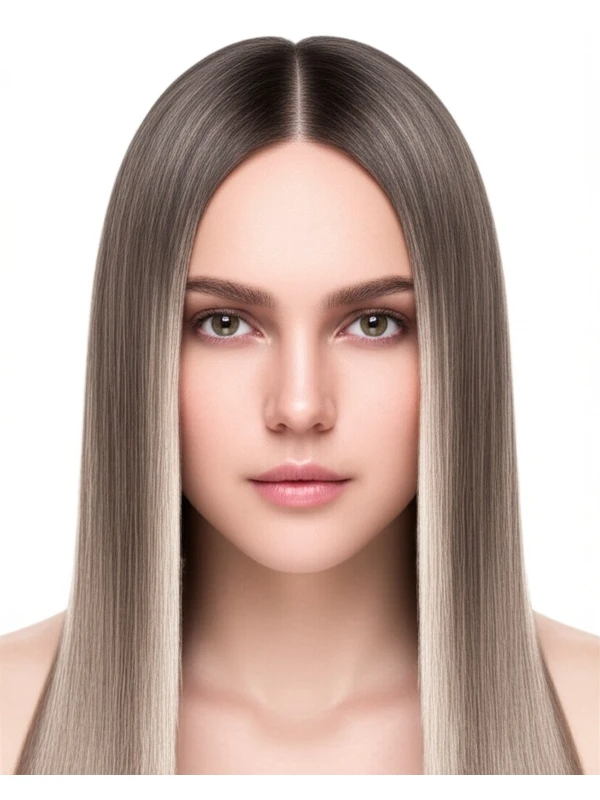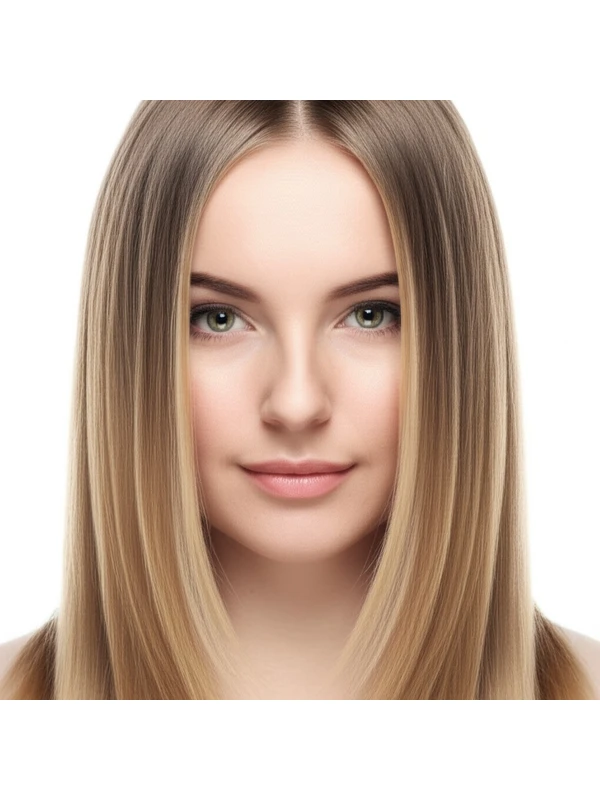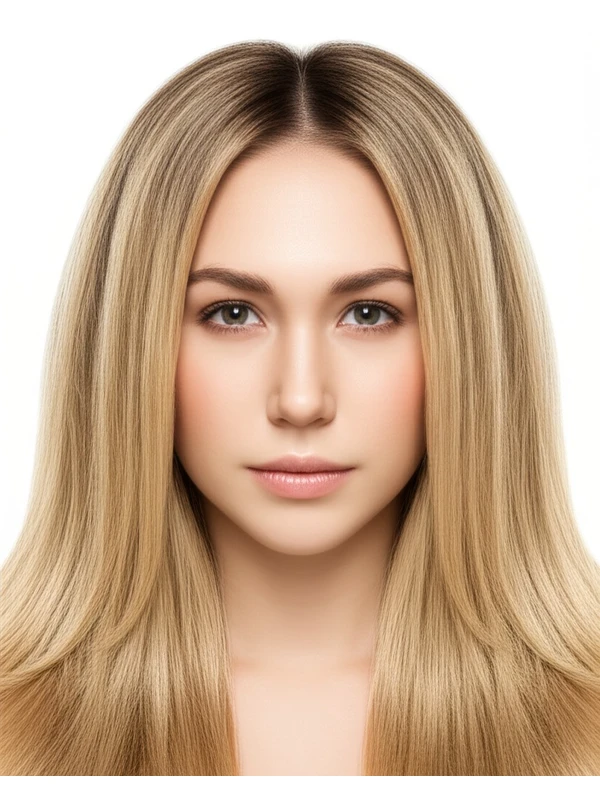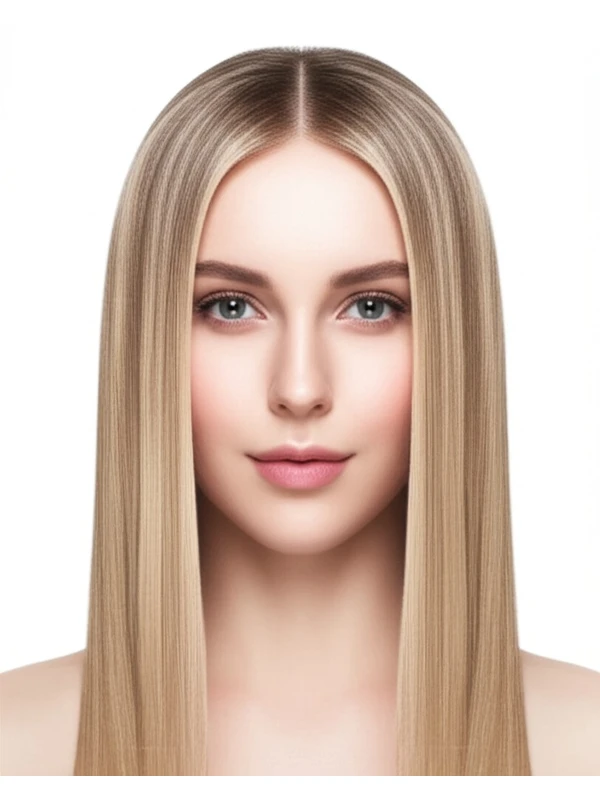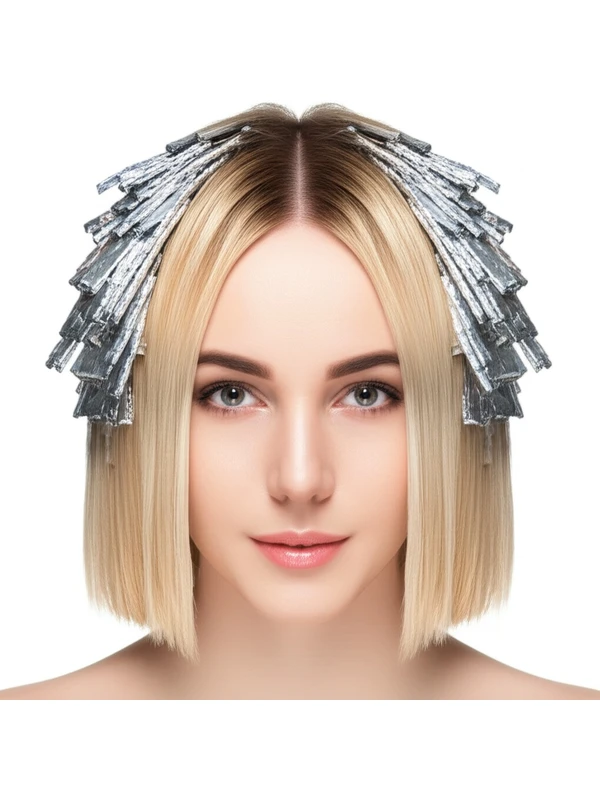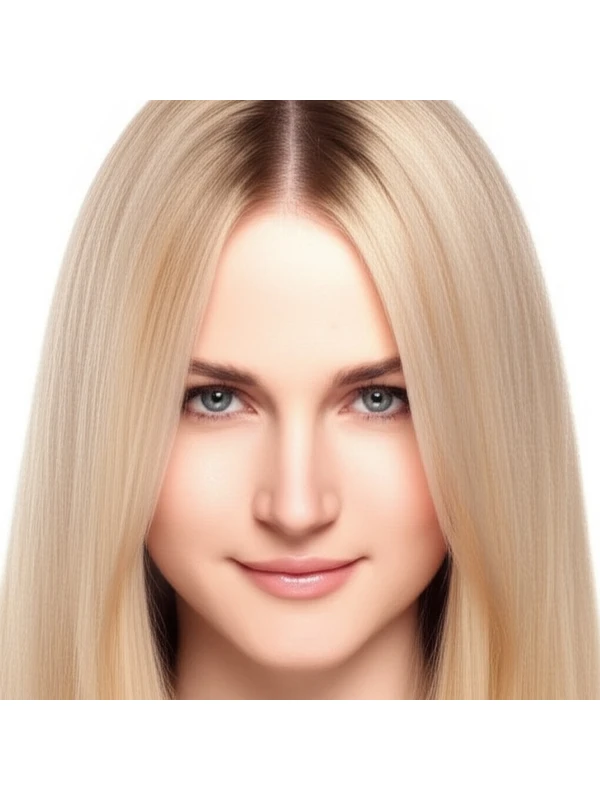#Ribbon Highlights: A Gentle Approach to Dimension
Ribbon highlights are a popular hair coloring technique known for its soft, blended look and relatively low-maintenance grow-out. It’s a gentler alternative to traditional foil highlighting and can create beautiful dimension without harsh lines. Let's explore everything you need to know about ribbon highlights.
#1. What Are Ribbon Highlights & How Do They Work?
Ribbon highlights involve painting lightener onto sections of hair, but instead of wrapping them in foils, the stylist gently twists or folds the painted strands like a ribbon and lays them against the hair. This allows air to circulate around the highlighted section during processing.
Tools Used:
- Lightener (developer strength is determined by your stylist based on your natural color)
- Color brush – typically a fan brush for precision
- Gloves
- Towel or cape
- Sometimes, balayage brushes are used as well.
Placement & Technique:
The stylist will strategically paint highlights throughout the hair, focusing on areas that need dimension and brightness. The "ribbon" effect is created by twisting or folding the painted strands to allow for even processing and a softer result. Processing time varies based on your natural color, desired lightness, and developer strength – your stylist will monitor this closely.
Timing:
The entire process typically takes between 2-4 hours depending on hair length, density, and the level of lift required.
#2. Best Use Cases: Achieving Your Hair Goals
Ribbon highlights excel at creating a natural, sun-kissed look. They're particularly good for:
- Adding Dimension: Creates depth and movement in hair that appears flat.
- Soft Root Blur: The placement allows for a gradual transition from darker roots to lighter ends, minimizing the harsh root line as it grows out.
- Face-Framing Highlights: Brightens around the face to enhance features and add warmth.
- Subtle Coverage of Gray Hair: Can blend gray hairs effectively without a drastic color change – though full coverage isn't possible with this technique.
#3. Who Are Ribbon Highlights For?
Ribbon highlights are versatile, but certain factors make them particularly suitable for some individuals:
- Natural Color Level: Works well on levels 2-6 (light brown to dark blonde). Those with darker hair may require multiple sessions to achieve desired lightness.
- Undertone: Ribbon highlights can complement both warm and cool undertones, but your stylist will choose a shade that enhances your skin’s complexion.
- Hair Type/Texture:
- Straight Hair: Ribbon highlights create a subtle brightness and movement.
- Wavy Hair: Enhances natural waves with added dimension.
- Curly & Coily Hair: Can add pops of light without compromising curl pattern, but requires careful consideration to prevent damage and maintain moisture.
- Hair Density: Suitable for all densities, though placement might be adjusted based on thickness.
- Hair Length: Works well on all hair lengths, from bobs to long layers.
- Lifestyle: Ideal for those who want a low-maintenance color that grows out gracefully and requires less frequent salon visits compared to traditional highlights.
#4. Ribbon Highlights vs. Similar Techniques
It's easy to confuse ribbon highlights with other highlighting methods:
- Balayage: Hand-painted, freehand technique for soft, blended highlights. Balayage often has a more diffused and less defined highlight placement compared to ribbons.
- Foilyage: Combines balayage painting with foil wrapping for faster processing and greater lift. Provides brighter results than ribbon highlighting.
- Traditional Highlights (Foil): Uses foils to isolate strands of hair for maximum lightening. Creates a more dramatic, defined highlight look – often resulting in harsher regrowth lines.
- Root Smudge/Shadow Root: A technique applied after highlights (like ribbon or balayage) where the root area is darkened slightly to soften the line between dark roots and lighter ends. Ribbon highlighting can be paired with a shadow root for an even softer transition.
#5. Maintenance & Longevity
Salon Timing: Ribbon highlights typically require touch-ups every 3-6 months, depending on hair growth and desired brightness.
Toner/Gloss Refresh: A gloss or toner may be needed every few weeks to maintain the tone of the highlights and keep them looking vibrant.
Grow-Out Behavior: The soft placement allows for a more gradual grow-out with less noticeable root lines compared to traditional highlighting techniques.
Budget & Time Planning: Ribbon highlights are generally moderately priced, falling between balayage (often less expensive) and traditional foil highlights. Factor in the initial application time (2-4 hours) and subsequent touch-ups every few months.
#6. At-Home Care Tips
- Wash Cadence: Wash hair only when necessary to prevent color fading – aim for 2-3 times per week or less.
- Heat Protection: Always use a heat protectant spray before using any styling tools (blow dryer, straightener, curling iron). Minimize heat styling whenever possible.
- Color-Safe Care: Use shampoos and conditioners specifically formulated for color-treated hair to preserve vibrancy and prevent fading. Look for sulfate-free formulas.
- Deep Conditioning: Incorporate a deep conditioning treatment once or twice a week to keep hair hydrated, especially important for curly/coily textures.
#7. Pros & Cons
Pros:
- Soft, blended highlights
- Low maintenance grow-out
- Gentler on the hair than traditional foil highlighting
- Versatile and suitable for many hair types
- Adds dimension and brightness
Cons:
- May not achieve extreme lightness quickly (multiple sessions may be needed)
- Less dramatic results compared to foilyage or traditional highlights.
#8. Salon Consultation Script Prompts: What Your Stylist Will Ask
Your stylist will want to understand your goals and hair history. Be prepared for questions like these:
- What is your current hair color?
- Do you have any gray hair coverage needs?
- What level of lightness are you hoping to achieve? (Show pictures!)
- What is your skin’s undertone – warm, cool, or neutral?
- How do you typically style your hair?
- Are there any areas where you want more or less brightness?
- Have you had previous color treatments on your hair? If so, what kind?
- What is your budget and how often are you willing to visit the salon for maintenance?
#9. Frequently Asked Questions
- Can I get ribbon highlights if my hair is very dark? It's possible, but may require multiple sessions to achieve the desired lightness, which can impact hair health.
- Are ribbon highlights damaging? They are generally less damaging than traditional foil highlighting due to the gentler processing method and reduced heat exposure. However, any chemical process has potential for some damage.
- How long do ribbon highlights last? The color itself will fade gradually over several months, but the placement remains consistent until touched up by your stylist.
- Can I do ribbon highlights at home? While technically possible, it's highly recommended to have them done professionally for best results and to minimize potential damage.
- What if my hair is very curly or coily? Ribbon highlights can be adapted for textured hair, but a stylist experienced with curl patterns is essential to ensure even processing and prevent frizz. Moisture is key!
- Will ribbon highlights make my hair look brassy? Using the right toner after highlighting helps neutralize unwanted tones. Your stylist will choose a toner that complements your skin tone and prevents brassiness.
- How does ribbon placement differ from balayage? Ribbon placement tends to be more defined, with distinct sections of painted hair, whereas balayage is freehand and more diffused.
- Can I combine ribbon highlights with other techniques like a shadow root? Absolutely! Combining techniques can create customized results that achieve your desired look.
